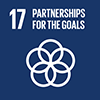Description/achievement of initiative
Global steel maker POSCO has been working on a project called POSCO Steel Village that POSCO finds poor residential area, and works to improve environment and residents of the area in the cities where POSCO works. POSCO Steel Village is a project to build a great quality of residents based on POSCOs own steel-house method and to provide sustainable life for them. Starting from Vietnam in 2014, POSCO has built a total of 104 houses, and is planning to expand into various regions. POSCO began this initiative to improve poor living conditions and residents, and contribute to achieving SDG 11.
Implementation methodologies
POSCO is planning to expand POSCO Steel Village project that customizes characteristics of regions and countries to secure sustainability of local community.
POSCO as Global Steel Maker owns World Premium technology which is objectively recognized for worlds top 3 class technological and economical prowess. POSCO also developed Seismic Resistance Steel that prepares for earthquake, and possesses various types of steel for architecture including SN steel. Additionally, POSCO developed high manganese anti-vibration steel that anti-vibration effect is efficient. With these methods, materials and technology, POSCO is applying them into various types of buildings and houses.
In Korea, POSCO already donated 27 steel houses using its new rising technology PosMAC for fire-stricken families and low-income families. POSCO also built welfare facilities that includes various design features using corrugated steel pipes, and high manganese flooring. Also in poor areas of Vietnam and Myanmar, POSCO considered their regional characteristics such as rainy season and constructed steel bridges with application of PosMAC that corrosion resistance is strong.
POSCO Steel House is designed to be strong even with vibration and deformation, thus, it is reliable in case of earthquake. In addition to anti-earthquake effect, corrosion resistance, life cycle, and durability will be longer when PosMAC is used as cladding material for steel house and steel bridge. Therefore, it can be alternative to act as sustainable residence.
Based on technology and experiences from Korea, POSCO is solving the issue of poor housing area in local communities where POSCO business sites are located. In order to protect safe and decent life of local residents, POSCO Steel Village Project has been ongoing since 2014 when POSCO started it first time in Vietnam. In order to contribute to achieving UN SDG 11, POSCO is endeavoring to spread its sustainable residence model all over the world which will be used to build steel houses in Korea, steel villages in Indonesia, and steel dome in Thailand.
Arrangements for Capacity-Building and Technology Transfer
Through POSCO Steel Village Project, POSCO is putting efforts to accomplish UN SDG 11, Make cities and human settlements inclusive, safe, resilient and sustainable. Starting with POSCO Steel Village Project, and helping on issue of poor human settlements, POSCO can achieve one of UN 2030 agenda By 2030, Ensure access for all to adequate, safe housing and basic services and upgrade slums. Furthermore, POSCO is ought to support financial and technical assistance, in building sustainable and resilient buildings utilizing, and to work on Sendai Framework for Disaster Risk Reduction 2015.
Coordination mechanisms/governance structure
POSCO has formed partnerships with employees, community members, and NGOs and pursued to make a sustainable society through mutual growths. POSCO family employees donate 1% of their monthly pay to raise funds for CSR (Corporate Social Responsibility) of POSCO 1% Foundation. By appointing outside experts into board of directors of POSCO 1% Foundation, POSCO has been fulfilling a greater transparency for selecting projects and operating fund. POSCO established a POSCO Steel Village SDGs Initiative to contribute to the achievement of Sustainable Development Goals and to make this project into an international initiative. Main project of the POSCO Steel Village SDGs Initiative is the POSCO Steel Village.
Designed by POSCO family company POSCO A&C, POSCO Steel Village uses POSCO steel materials and strengthens durability and life of building.
This project maintains a great cooperative relationship with NGOs such as Habitat and serves to enhance competence of local communities at home and abroad and capability of project performance. It also promotes proper residential environment through arrangements with local government and citizens and provides necessary conditions to achieve sustainable life for residents.
POSCO Steel Village project has established not only buildings, houses, schools, and bridges, but also a social enterprise that helps local community to be financially independent. Based on this project, POSCO and local community try to solve issues of job creation and lack of job as well as issues of poor residential area.
Number of people who are suffered from housing deprivation has been increased with more than 130 million people compared to 725 million people in 2000. This statistic shows that housing deprivation is one of the biggest risks that developing country and poor countries face. UN Habitat considers housing and slum upgrading as a critical issue among 16 urban themes. POSCO as Global Steel Maker Company, has constructed a condition to solve these problems directly with advanced construction technique, and has been practicing through partnerships formed with government, local community, and relevant NGOs.
Partner(s)
POSCO, POSCO 1% Foundation



 December/2017
December/2017
 December/2018
December/2018
 November/2018
November/2018
 Time-frame: June 2014 - December 2022
Time-frame: June 2014 - December 2022